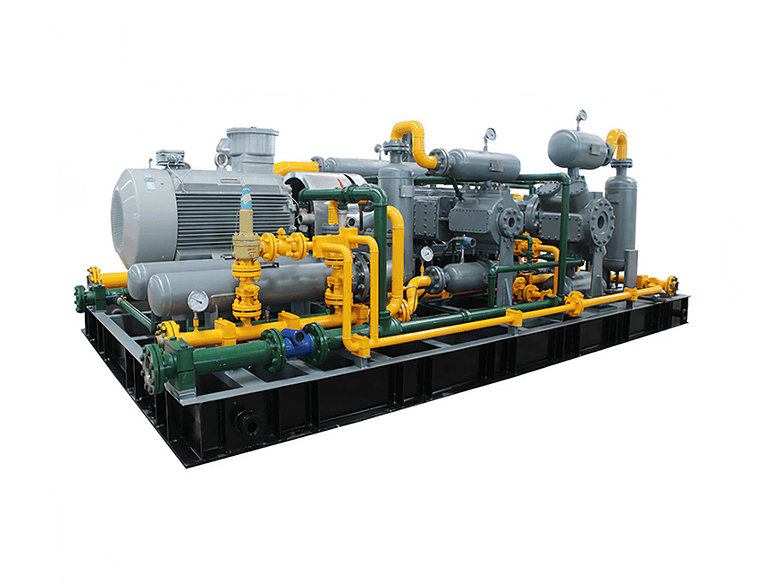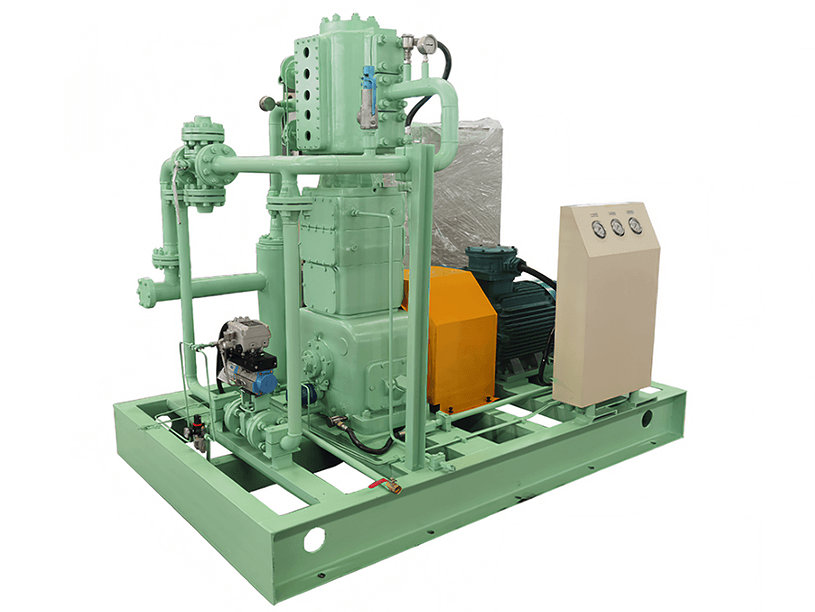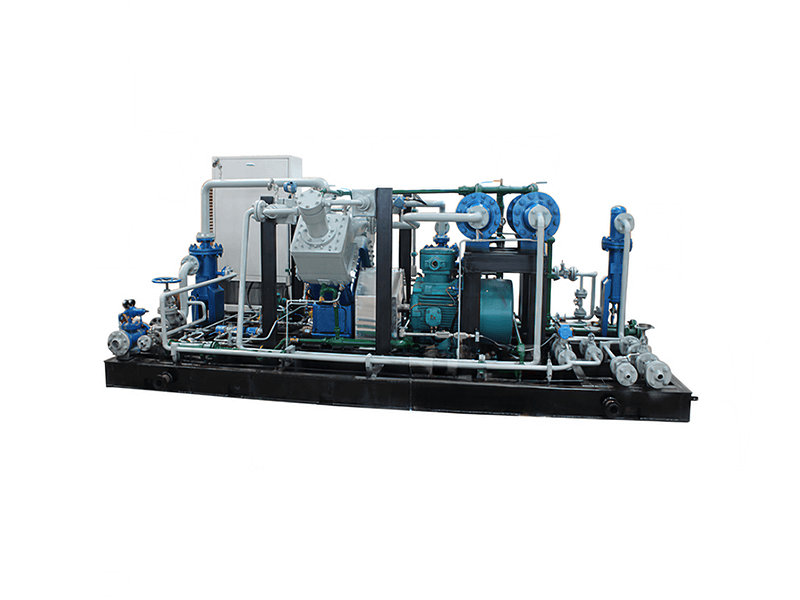【男人用困困怼女人】最新入口
-

How to choose the appropriate parameters for a mixed gas compressor?
Jun 09, 2024 -

Components and price range of a chlorine compression system
Jun 18, 2024 -

Compression of Wellhead Gas and Wellhead Gas
May 01, 2024 -

Features And Applications Of CNG Standard Station Compressor
May 30, 2024 -

Manufacturers of natural gas compressors in China and other countries
Apr 16, 2024 -

Characteristics and corresponding applicable industries of different types of natural gas compressor
Jul 11, 2024
男人用困困怼女人【乾坤易变】May 30, 2024
by:Anhui Shengnuo Compressor Manufacturing Co.,Ltd
Follow Us:
The CNG Standard Station Compressor is responsible for compressing the natural gas from a lower pressure to the high-pressure level required for vehicle refueling. It increases the energy density of the gas, allowing for more efficient storage and transportation.

【男人用困困怼女人】注册登录
The compressor is a critical component of a CNG standard station, responsible for compressing natural gas from a lower pressure to the high-pressure level required for vehicle refueling. Here are some key features of a CNG station compressor:
1. High Pressure Capacity: CNG station compressors are designed to handle high-pressure operations. They can compress natural gas typically to pressures ranging from 3,000 to 5,000 pounds per square inch (psi) or higher, depending on the specific requirements of the station and the vehicles being serviced.
2. Multiple Stages: Compressors in CNG standard stations often utilize multiple stages of compression. This means that the gas is compressed in several stages or steps, with each stage increasing the pressure incrementally. Multiple stages help improve the efficiency of compression and reduce wear on the compressor components.
3. Lubrication System: Compressors require proper lubrication to minimize friction and wear between moving parts. CNG station compressors often employ lubrication systems that are specifically designed for natural gas compressors. These systems ensure the smooth operation of the compressor and extend its lifespan.
4. Cooling System: Compression generates heat, and excessive heat can be detrimental to the compressor's performance and longevity. To manage the temperature, CNG station compressors incorporate cooling systems that help dissipate heat generated during compression. These systems may include air or water cooling mechanisms.
5. Safety Features: Compressors in CNG standard stations are equipped with various safety features to ensure the safe operation of the equipment. These features may include pressure relief valves that release excess pressure, temperature sensors for monitoring overheating, and emergency shut-off systems to prevent accidents.
6. Control and Monitoring Systems: Compressor operations are typically managed by control and monitoring systems. These systems regulate the compressor's performance, monitor critical parameters such as pressure and temperature, and ensure that the compression process is within the desired range. They can also provide alerts or alarms in case of any abnormalities.
7. Maintenance and Serviceability: CNG station compressors are designed with ease of maintenance in mind. They often have accessible components, such as filters and valves, that can be easily inspected and replaced. Additionally, manufacturers may provide maintenance guidelines and service support to ensure the reliable and efficient operation of the compressors.
8. Integration with Station Systems: CNG station compressors are integrated with other station systems, such as safety systems, control systems, and monitoring systems. This integration allows for coordinated operation and ensures that the compressor functions smoothly within the overall infrastructure of the station.
It's important to note that the specific features and capabilities of CNG station compressors can vary based on the manufacturer, model, and the size or capacity of the station. Compressors are selected based on the anticipated demand and the number of vehicles the station aims to serve.
【男人用困困怼女人】平台地址
CNG standard station compressors are primarily used for compressing natural gas to the required high pressure for refueling CNG vehicles. Here are the main applications of CNG station compressors:
1. Vehicle Refueling: The primary application of CNG station compressors is to provide compressed natural gas for refueling CNG-powered vehicles. These compressors take natural gas from the low-pressure utility line and compress it to the desired high-pressure level, typically ranging from 3,000 to 5,000 psi or higher. The compressed gas is then dispensed into the CNG tanks of vehicles through refueling nozzles.
2. Public CNG Stations: CNG station compressors are used in public CNG stations, which are open to the general public and offer refueling services to a wide range of CNG vehicles. These stations are typically located strategically to provide convenient access to CNG fuel for individual vehicle owners, commercial fleets, and public transportation vehicles.
3. Private Fleet Refueling: Many companies, organizations, and government agencies operate their own fleets of CNG vehicles. These entities often have private CNG standard stations with dedicated compressors to refuel their vehicles. Private fleet refueling allows these entities to have control over their refueling operations, ensuring availability and ease of access to CNG fuel for their vehicles.
4. Transit and Public Transportation: CNG station compressors play a crucial role in supporting CNG-powered transit and public transportation systems. Buses, shuttles, and other public transportation vehicles equipped with CNG tanks rely on CNG station compressors to refuel their vehicles efficiently. Compressed natural gas is a popular choice for public transportation due to its lower emissions and cost-effectiveness.
5. Commercial and Industrial Applications: In addition to vehicle refueling, CNG station compressors can be used for various commercial and industrial applications. For instance, they can be employed in manufacturing facilities or industrial plants that utilize compressed natural gas in their processes, such as heating, power generation, or as a feedstock for other operations.
6. Backup and Emergency Power: CNG station compressors can also be used for backup and emergency power applications where compressed natural gas is utilized as a fuel source for generators. In these cases, the compressors ensure a constant supply of compressed gas to maintain the operational readiness of the backup power system and provide electricity during power outages or emergencies.
7. Fueling Stations for Natural Gas-Powered Equipment: CNG compressors can be utilized in specialized fueling stations that cater to natural gas-powered equipment beyond just vehicles. This can include equipment such as forklifts, construction machinery, and agricultural vehicles that run on compressed natural gas. The compressors ensure a convenient and reliable fueling solution for these specialized applications.
8. Mobile CNG Fueling: In certain situations where a fixed CNG station may not be available or practical, mobile CNG fueling solutions can be deployed. Mobile CNG compressors can be mounted on trailers or trucks, allowing them to be transported and set up at different locations as needed. These mobile units provide flexibility in refueling CNG vehicles, such as during temporary events, construction sites, or in areas with limited infrastructure.
9. Gas Storage Facilities: CNG compressors are also used in gas storage facilities where natural gas is compressed and stored for various purposes. These facilities can include underground storage caverns or above-ground storage vessels. Compressors play a vital role in maintaining the required pressure levels within the storage infrastructure to ensure efficient and safe operations.
10. Natural Gas Vehicle Conversion Centers: CNG compressors are often found in natural gas vehicle conversion centers where conventional gasoline or diesel vehicles are converted to run on compressed natural gas. These conversion centers require compressors to provide the necessary fueling infrastructure for the converted vehicles.
11. Research and Development: CNG station compressors are utilized in research and development settings related to natural gas technologies. This includes testing and experimentation with new compressor designs, investigating compression efficiency, and evaluating the performance of different compression techniques. Compressors in these environments help advance the understanding and development of CNG-related technologies.
12. International Applications: CNG station compressors are used worldwide in countries that have adopted natural gas as a significant part of their transportation fuel mix. These compressors support the growth of CNG infrastructure globally, enabling the expansion of CNG vehicle fleets and promoting cleaner and more sustainable transportation options on an international scale.
CNG station compressors find diverse applications across various sectors, from transportation to industrial and commercial uses. As the demand for cleaner and alternative fuels continues to rise, the role of CNG station compressors in facilitating the adoption of natural gas as a transportation fuel becomes increasingly important.
【男人用困困怼女人】娱乐全站

Hi! Welcome back.
How are you doing?
Let s talk! We’ll provide the perfect solution for you!

Since its establishment, ASC Compressor has focused on comprehensive solutions for Oilfield industry, CNG/LNG industry, Environmental protection, and Industrial compression. It has excellent quality in designing, researching, producing and manufacturing.
- Quick Link > Home > Products > Applications > News > About > Contact
-
Contact Us
- E-Mail: [email protected]
- Tel: +8618098536798/+86(0)5633698699
- Fax: +86(0)5633698699
-
Address:
No. 17 Xingye Road, Economic Development Zone, Xuanzhou District, Xuancheng City, Anhui Province, China

















